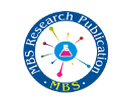Past Issue | Volume | Volume 4,Issue 3,Mar,2018
![]() ANALYSIS ON IMMUNE EVASION STRATEGIES OF THE VIRUS HIV
ANALYSIS ON IMMUNE EVASION STRATEGIES OF THE VIRUS HIV
Mariya Jeelani, Dr. (Mrs.) Himanshu
Abstract:-
Viruses must be to great degree effective predators as they depend on living cells for replication. All living species speak to prey for a viral intruder. Viruses have coevolved with their hosts and thusly have constrained pathogenicity in an immune-competent normal host. Being a noteworthy first line of immune safeguard, the supplement framework keeps a consistent vigil against viruses. Its capacity to perceive huge panoply of viruses and virustainted cells, and trigger the effectors pathways, brings about balance of viruses and executing of the contaminated cells. This choice weight applied by supplement on viruses has influenced them to develop a large number of countermeasures. These incorporate focusing on the acknowledgment particles for the shirking of location, focusing on key catalysts and edifices of the supplement pathways like C3 convertases and C5b-9 development – either by encoding supplement controllers or by enlisting film bound and solvent host supplement controllers, dividing supplement proteins by encoding protease, and repressing the amalgamation of supplement proteins. Moreover, viruses likewise misuse the supplement framework for their own advantage
![]() QUANTUM DOTS AND THEIR ROLE IN NEXT-GENERATION SOLAR CELLS
QUANTUM DOTS AND THEIR ROLE IN NEXT-GENERATION SOLAR CELLS
Abstract:-
Quantum dot (QD) solar cells are an innovative advancement in photovoltaic technology, offering the potential to significantly enhance solar energy conversion. Quantum dots, with their size-tunable bandgaps and high photoluminescence quantum yields, enable these cells to absorb a broader spectrum of sunlight and convert it into electrical energy more efficiently. Recent breakthroughs have focused on integrating quantum dots with other technologies, such as perovskites and organic photovoltaics, leading to hybrid solar cells that combine the strengths of each material for improved performance. Advances in synthesis techniques and material development have addressed key challenges related to stability and scalability, paving the way for commercial applications. The integration of QD technology into solar panels promises increased efficiency, flexibility, and cost-effectiveness, potentially transforming the solar industry. As research continues, quantum dot solar cells are poised to play a crucial role in the future of renewable energy, offering innovative solutions and contributing to a more sustainable energy landscape.
![]() SOLAR ENERGY HARVESTING: THE POTENTIAL OF THERMOPHOTOVOLTAICS
SOLAR ENERGY HARVESTING: THE POTENTIAL OF THERMOPHOTOVOLTAICS
Abstract:-
Thermophotovoltaics (TPV) represent a promising advancement in solar energy harvesting, offering a unique approach to converting thermal radiation into electrical power. Unlike conventional photovoltaic technologies that rely on direct sunlight, TPV systems harness thermal radiation from high-temperature sources, such as concentrated solar power (CSP) systems and industrial waste heat. This capability allows TPV to operate efficiently in varied conditions and environments. Despite its potential, TPV technology faces challenges related to material constraints, efficiency barriers, and high costs. Recent research has focused on developing advanced materials, optimizing system designs, and integrating TPV with other energy technologies to enhance performance and reduce costs. The future of TPV looks promising, with potential applications spanning from CSP and waste heat recovery to space missions. Continued advancements in materials, design innovations, and integration strategies are expected to address existing limitations and expand the role of TPV in the global energy landscape.
Need PHD Research Writing Help?

